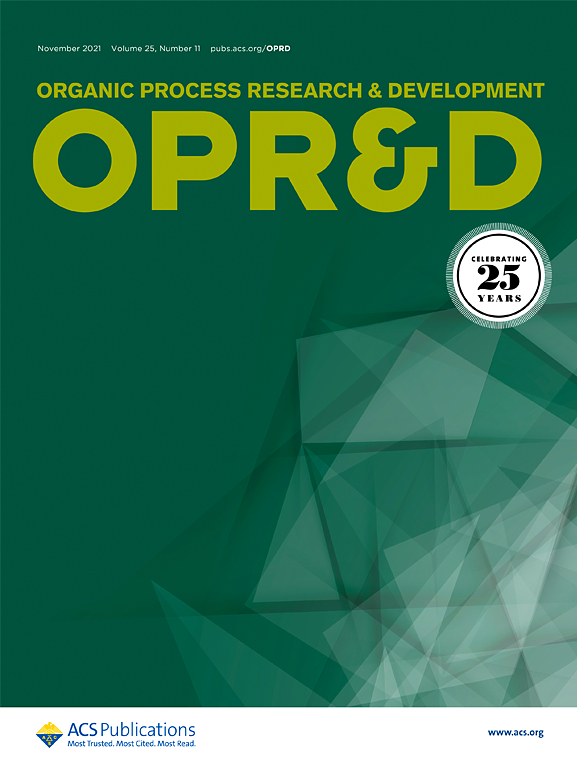结合在线热质量流和质谱数据的定量气体演化分析
IF 3.5
3区 化学
Q2 CHEMISTRY, APPLIED
引用次数: 0
摘要
开发了一种独特的方法来识别和量化与化学反应相关的气体演化,其中产生了多种气体组分。该方法采用了多种过程分析技术:反应量热法、在线质谱法和通过热质量流量计进行的气体演化测量。该技术由内部Excel宏支持,该宏可解决质谱仪数据中的离子重叠。仔细同步独立的分析仪器是获得准确数据的关键。确定了所生成的每种气体的特征、演化速率和定量。这些信息对于中试工厂和生产设施至关重要,以确定它们是否有能力确保产生多种不可冷凝有害气体的过程的安全操作基础。本文章由计算机程序翻译,如有差异,请以英文原文为准。
Quantitative Gas Evolution Analysis via Combination of Online Thermal Mass Flow and Mass Spectrometry Data
A unique methodology has been developed to identify and quantify gas evolution associated with a chemical reaction, where multiple gas components are generated. This methodology employs the use of multiple process analytical technologies: reaction calorimetry, online mass spectrometry, and gas evolution measurement via a thermal mass flow meter. The technique is supported by an in-house Excel macro that resolves ion overlaps in the mass spectrometer data. Careful synchronization of the separate analytical instrumentation is critical to obtaining accurate data. The identity, evolution rates, and quantification of each gas generated are determined. This information is vital for pilot plant and manufacturing facilities to determine if they have the capability to ensure a basis of safe operation for processes that generate multiple, noncondensable, hazardous gases.
求助全文
通过发布文献求助,成功后即可免费获取论文全文。
去求助
来源期刊
CiteScore
6.90
自引率
14.70%
发文量
251
审稿时长
2 months
期刊介绍:
The journal Organic Process Research & Development serves as a communication tool between industrial chemists and chemists working in universities and research institutes. As such, it reports original work from the broad field of industrial process chemistry but also presents academic results that are relevant, or potentially relevant, to industrial applications. Process chemistry is the science that enables the safe, environmentally benign and ultimately economical manufacturing of organic compounds that are required in larger amounts to help address the needs of society. Consequently, the Journal encompasses every aspect of organic chemistry, including all aspects of catalysis, synthetic methodology development and synthetic strategy exploration, but also includes aspects from analytical and solid-state chemistry and chemical engineering, such as work-up tools,process safety, or flow-chemistry. The goal of development and optimization of chemical reactions and processes is their transfer to a larger scale; original work describing such studies and the actual implementation on scale is highly relevant to the journal. However, studies on new developments from either industry, research institutes or academia that have not yet been demonstrated on scale, but where an industrial utility can be expected and where the study has addressed important prerequisites for a scale-up and has given confidence into the reliability and practicality of the chemistry, also serve the mission of OPR&D as a communication tool between the different contributors to the field.

 求助内容:
求助内容: 应助结果提醒方式:
应助结果提醒方式:


